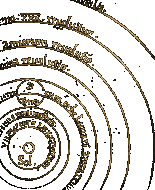 |
Making one's way through the stars is a daunting task. Worse still is when one attempts to so at speeds faster than light. Imagine trying to manoeuvre your way past countless obstacles before you can actually see them! This is a concern for all starships when traveling at warp speeds. The Federation's Department of Exploration and Defense has divided the galaxy into hundred of thousands of sectors. One sector is approximately twenty light-years cubed. Sectors are divided into quadrants, with the Sol star system defining the meridian between the alpha and beta quadrants. When setting a course, Starfleet has two mathematical expressions to define a direction. One is called a heading, which describes the direction in relation to the geometric centre of the galaxy. A heading of 000, mark 0 points to this centre. The other expression is called a bearing. A bearing describes position relative to the bridge of the ship. A bearing of 90, mark 270 is directly up and to the starbord side (right) of the ship. |
 |
Because there may objects such as stars or planets in the course, a proper path must be defined. All starships are equipped with navigational computers, which are capable of working independently of the main computer. Installed in each computer is vital astrometric data, with information on stars, comets, and other anomelies in the galaxy. These statistics are constantly updated. The computer can then take this information and map out the galaxy in terms of natural phenomena. Along with the stellar cartography are the navigational and long-range sensor arrays. The navigational sensors, again working autonomously from the rest of the ship, are specifically designed to monitor the path ahead of the ship. Extremely sensitive equipment allow the computer to make "on-the-fly" changes in its path, avoiding obstacles not charted in astrometrics (an alien starship, for example). Long-range sensors, while more of a general scientific instrument, can also forewarn the navigational computer to divert its course. |